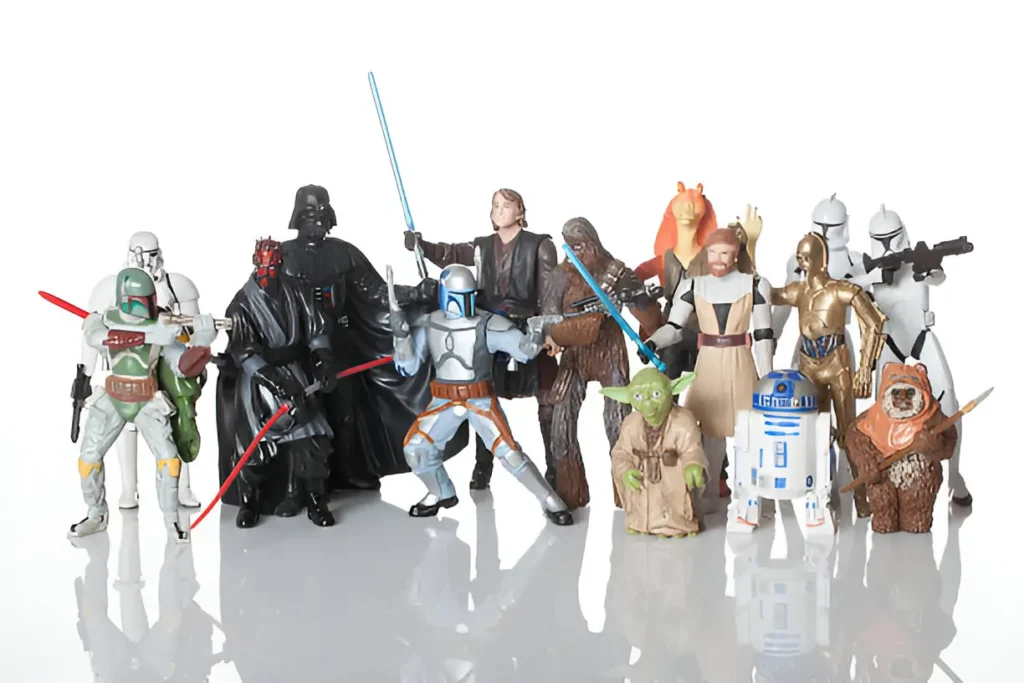Action figures have captured the hearts of children and collectors for decades. What started as simple plastic toys has now grown into a global industry full of detailed, high-quality figures that blur the line between toys and art.
From the earliest days of toy soldiers to today’s lifelike superhero and movie figures, the journey of action figures is a fascinating one. Let’s explore how these iconic toys have evolved over the years, why they continue to be popular, and what makes them so special to fans young and old.
The Early Days of Action Figures
The idea of toy figures dates back to the early 1900s when small, painted lead soldiers were popular with children. But the real birth of the modern action figure happened in the 1960s when Hasbro launched G.I. Joe.
Designed for boys who wanted something similar to Barbie dolls but with a more adventurous theme, G.I. Joe introduced the term “action figure” to avoid calling it a doll. These early figures were around 12 inches tall, with poseable limbs and detailed accessories, quickly becoming a hit. This set the stage for a whole new category of toys that focused on action, imagination, and storytelling.
The Rise of Pop Culture Figures
In the 1970s and 1980s, action figures became closely tied to popular movies, TV shows, and comics. Star Wars action figures from Kenner changed the toy landscape, with smaller 3.75-inch figures that were easier to collect and came with vehicles and playsets.
Around the same time, another wave of action figures hit the market: the Ninja Turtle toys. Inspired by the Teenage Mutant Ninja Turtles comics and animated series, these figures became a worldwide sensation. Kids everywhere were drawn to Leonardo, Donatello, Michelangelo, and Raphael, sparking a massive toy line with action-packed features, detailed accessories, and imaginative designs. Ninja Turtle toys became a key part of many childhoods and remain beloved by collectors today.
The Shift Toward Detail and Articulation
By the 1990s, action figures were no longer just simple toys with basic movement. Companies like McFarlane Toys raised the bar, creating figures with incredible detail, realistic paint jobs, and more points of articulation. Characters from comics, sports, movies, and video games were brought to life with a level of craftsmanship that appealed to older fans and adult collectors.
This marked an important shift in the market, where action figures were no longer just for play but also for display and collection. The rise of collectible figures expanded the industry, blending the worlds of toys and art.
The Age of Premium and Limited Edition Figures
In the 2000s and beyond, action figures continued to evolve with the introduction of premium brands and limited editions. Companies like Hot Toys, Sideshow Collectibles, and Mezco began producing high-end figures with lifelike faces, fabric clothing, detailed accessories, and highly poseable bodies. These figures often came with a higher price tag but were aimed at serious collectors who wanted the best.
Popular franchises like Marvel, DC, Star Wars, and video game characters were recreated with stunning accuracy. Even classic lines like the Ninja Turtle toys saw modern re-releases and updates, allowing fans to enjoy both nostalgia and cutting-edge design.
How Technology Changed the Game
Technology has played a huge role in the evolution of action figures. Digital sculpting, 3D printing, and advanced paint applications now allow toy makers to achieve an unprecedented level of detail. Figures can feature lifelike skin tones, tiny costume textures, and precise facial expressions.
Articulation has also improved, with hidden joints and flexible materials making poses more natural. In addition, some modern figures include electronic features like lights, sounds, or even app connectivity, blending traditional toys with interactive play.
The Role of Nostalgia and Fandom
One reason action figures have remained popular is the strong sense of nostalgia they create. Many adult collectors today grew up with lines like Star Wars, G.I. Joe, Transformers, and Ninja Turtle toys, and they continue to seek out figures that remind them of their childhoods.
Companies know this and often release retro-inspired collections or anniversary editions to tap into that emotional connection. At the same time, younger generations are discovering these figures through new movies, shows, and games, ensuring that classic brands stay fresh and relevant.
The Future of Action Figures
Looking ahead, the future of action figures seems bright. With fan communities thriving online, crowdfunding campaigns launching exclusive figures, and constant innovation in materials and design, the industry continues to grow. There is also a rising interest in diversity, with more female characters, characters of colour, and figures representing a wider range of stories and backgrounds. This opens up new possibilities for fans and collectors who want to see themselves reflected in their favourite toys.
The journey of action figures from simple plastic toys to modern masterpieces is a story of creativity, innovation, and passion. Whether you are a long-time collector, a casual fan, or a parent shopping for your child, there is something magical about holding a figure that brings your favourite characters to life.
From classic lines like Ninja Turtle toys to today’s premium collectibles, action figures continue to capture imaginations and inspire play across generations. As the industry keeps evolving, one thing is certain — action figures will remain a beloved part of pop culture for years to come.
Read more: Robot Pool Cleaner Showdown: Polaris vs Beatbot Comparison


